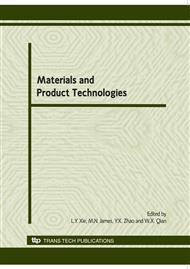p.507
p.512
p.517
p.522
p.527
p.532
p.536
p.541
p.546
Probabilistic Fatigue Property of Aluminium Alloy Welded Joint for High-Speed Train
Abstract:
Four kinds of aluminum alloy welded joints widely used in car-body for high-speed train were experimentally examined to clarify their probabilistic fatigue properties. Based on BS8118 and IIW standard criterions, the probabilistic fatigue limits for these four welded joints, corresponding to loading cycle of 2×106, are evaluated under two different loading modes. In terms of the extrapolation proposed by Eurocode 9 criterion, the corresponding probabilistic S-N curves in very high cycle regime are obtained, combined with grouping method and lifting and lowering method.
Info:
Periodical:
Pages:
527-531
Citation:
Online since:
June 2010
Keywords:
Price:
Сopyright:
© 2010 Trans Tech Publications Ltd. All Rights Reserved
Share:
Citation:


